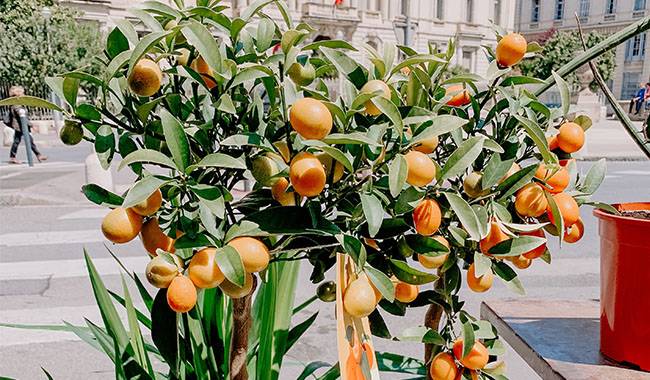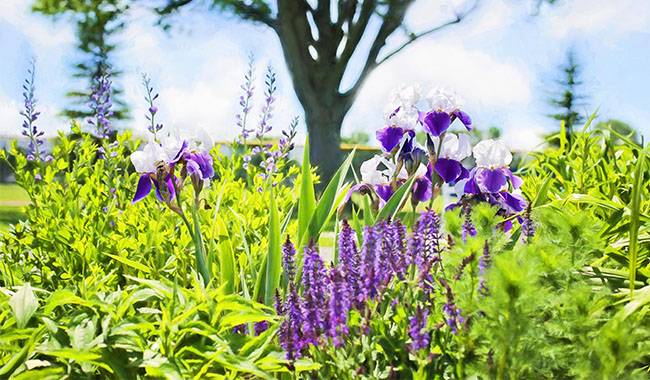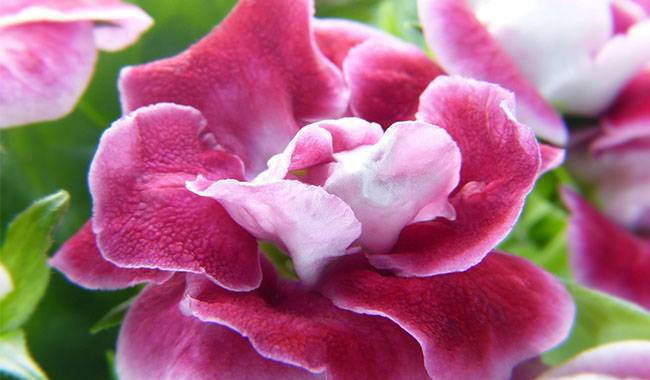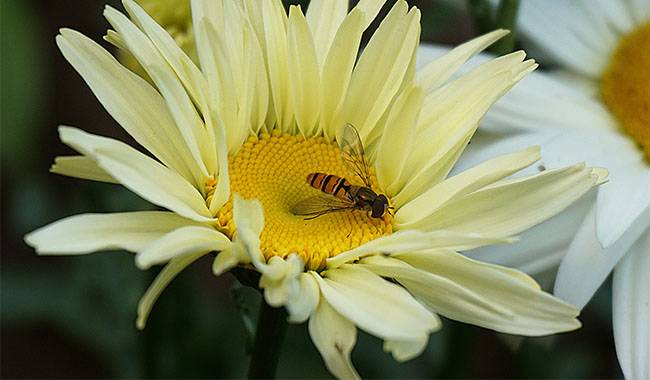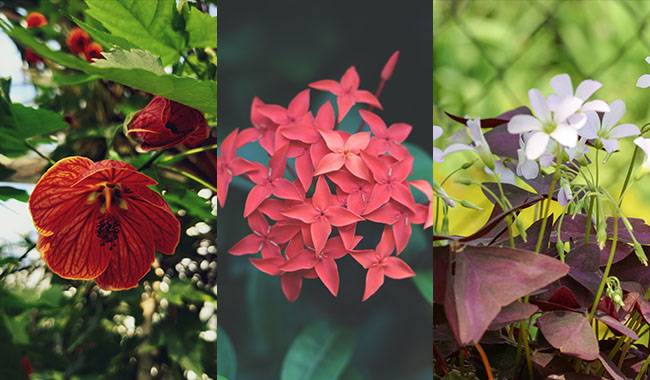
Summer is the time when most balcony and garden flowers are in full bloom. But indoors, garden stars don’t always look right and require too much attention. Fortunately, many indoor plants also bloom in the summer. Meanwhile, the best of them last for more than three months, sometimes tantalizing with their elegance and bright carefree appearance. Houseplants that bloom throughout the summer help bring bright colors and sunshine into your home. All they need is regular care. You will learn The 5 Most Colorful Indoor Plants That Blooms All Summer in the ThumbGarden article.
WHICH HOUSEPLANTS BLOOM IN SUMMER?
There are many superstars among the plants that bloom in the summer. In early summer, the luxurious stars of passionflower, the heavy flowers of medlar, the moving snowy Mandevilla, the waxy inflorescences of hoya, and the fluffy clusters of poinsettia begin to bloom.
Many of the backbone primroses also continue to bloom through the summer, although they are primarily associated with spring.
Summer is a colorful season with miniature roses, rustic but perfect gerberas, large, lush hydrangeas, colorful hibiscus, and many other house and garden plants.
Even the Birdberry loves to enjoy its abundant summer blooms. From June to August, the irresistible eustoma can even outshine the clematis in your garden. If you don’t like the flowers of caladiums and justicia, you can keep an eye out for gloxinias, fire lilies and gardenias, Crossandra infundibuliformis, clerodendron, curcuma and episca, browallia and zebra-plant, and The beauty of Allamanda.
It is hard to imagine a summer without the touching crumbs of sensual trees. In the bright, long summer days, they delight with a special abundance of flowers that seem to be a delicate garland against the darkness and huge velvety foliage. But there is something that surprises other Gesneriaceae as well. After all, their range is not limited to sensual trees.
Orchids should not be forgotten either. The most unpretentious of the country’s beloved exotic species respond well to increased sunlight hours and enjoy vigorous flowering all summer long. Enjoy the magnificent blooms of Phalaenopsis and Shortleaf Maidenhair while endlessly admiring their butterflies.
It’s also worth remembering purely practical considerations when choosing houseplants that will bloom throughout the summer. Many of the more lushly flowering plants, however, are very capricious. And they will not tolerate a lack of watering or improper feeding conditions.
In order for them to flower aggressively and for a long time, light and temperature as well as humidity must be ideal for them. Choose only those plants that you can give them everything they need to show their true beauty and good flowering ability.
Let’s take a closer look at five of the most striking plants whose vibrant colors and lush blooms will keep you happy all summer long.
The fiery beauty of West Indian Jasmine (Ixora)
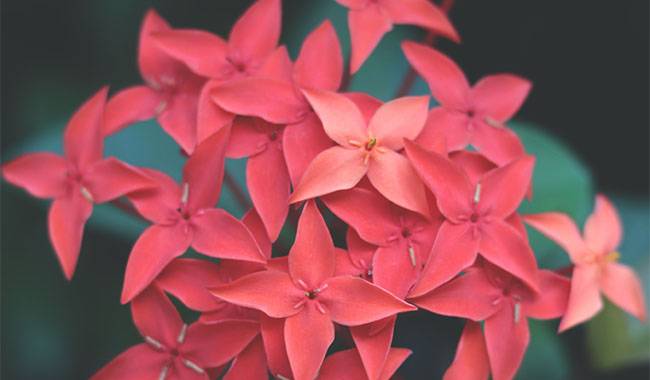
For its spectacular and “heavy” flowers, the only poinsettia can compete with West Indian Jasmine. West Indian Jasmine is one of the most unique houseplants. Exceptionally demanding for a plant with one of the most striking exterior appearances, Ixora amazes with the harmonious beauty of its foliage and flowers, which are equally impressive.
Ixora is an evergreen, beautifully flowering shrub with a dense, striking canopy. When styled correctly, they can grow to just half a meter tall, forming striking, broad shrubs – spreading, lushly branched, and showy.
West Indian Jasmine grows rapidly and out of control. But their dark, lance-shaped leaves have a beautiful semi-matte finish and grow densely on shoots, forming a thick, massive canopy that is endlessly evocative.
The rich foliage color seems to absorb light and looks especially striking in summer. the Ixora bush has dense foliage even beneath the shoots, which only adds to the impression.
Flowering time. West Indian Jasmine begins flowering in May or June and blooms until mid-autumn. How long they stay in bloom depends largely on the quality of care.
Color range. It is difficult to find a culture with such a fiery range of bright shades among houseplants: yellows, reds, and oranges, Ixors’ dusky pinks stand out with pure acrylic hues and saturation. Their color is always monochromatic.
Flowering characteristics. The hemispherical, peltate inflorescences spread in the axils of the upper leaves. With proper care, they almost completely conceal the green plant, as if creating a new layer over it. The scales look very large and consist of hundreds of small, four-petaled flowers with very slender, surprisingly cross-shaped flower tubes.
West Indian Jasmine is not difficult to cultivate. Since they prefer light but not direct sunlight, they are not well adapted even in penumbral areas. The main objective in choosing a location is to be able to lower the temperature in winter and prevent high temperatures in summer. Stable room temperatures allow West Indian Jasmine to bloom relentlessly throughout the summer. Ixors prefer to overwinter at about 59 °F (15°C).
Indoor West Indian Jasmine Conditions and Care
Caring for West Indian Jasmine is not easy. They need high air humidity, which can be maintained by spraying. However, the best results can be achieved by installing a humidifier.
- Watering
Water regularly, heavily in the summer, and sparingly in the winter to prevent the soil from drying out. The water in the trays should be drained and the soil at the top should be dry between waterings. - Fertilization
Apply fertilizer with flowering plants every 10-14 days during the growing and flowering period. - Pruning
Pruning is a must for this plant. Shape the shrub to the desired size and keep it compact. Prune only after flowering, usually shortening the long branches by half to preserve the leaves at the bottom of the shrub. - Repotting
In late February or early March, transplant Ixora as a root mastering substrate only as needed. It needs a humus-rich, coarse, loose substrate with an acidic reaction. The drainage layer should be high. Ixora prefers to be covered with peat. - Propagation
Ixora is propagated by cuttings, which will only root at high temperatures.
The exquisite hat of cheerful Cape primrose (Streptocarpus)
Among the cyclamen relatives, there are quite a few plants with spectacular flowers. But if you want to find a compact star for your summer interiors that blooms so much and looks so bright that it outshines any summer bouquet, then you should first look at Cape primrose. their flowers resemble both orchids and cyclamen. The delicate palette and the most vibrant foliage can only be envied.
Streptocarpus has a striking “summer” look. They are limited to a maximum height of 10 inches (25 cm) (excluding the height of the flower stems). The compact, dense and squat leaf mats are accented by dazzling shades of green that stands out from any other houseplant.
The velvety, sometimes very large, and in other varieties very small, groundcover-like foliage are capable of decorating any summer interior in their own right. But they are only a background for colorful flowers in this plant.
Flowering time. Streptocarpus does not appear on stage in summer, but it is in summer that they reach their true decorative potential. In general, the flowering period of modern hybrids lasts from April to October.
Color range. One of the richest in hues, watercolor combinations, and veining, the white-pink-mauve palette ranges from bright and saturated to very subtle. Available in multicolored and monochromatic varieties.
Flowering characteristics. Streptocarpus forms tall stems with dense inflorescences of beautiful tubular flowers in a form somewhat like orchids but related to Gesneria. The rounded petals, asymmetrical structure, narrow tube, and very beautiful throat are constant in all Cape primrose.
The flowering period is one year. After flowering, Cape primrose produces very primitively, spiral-shaped fruits.
Conditions and care of Cape primrose indoors
Conditions for Cape primrose are easy to find. They tolerate semi-shady conditions, but they also tolerate light and bloom better in diffuse bright light. Room temperature and warmer temperatures are suitable for them. However, during the dormant period from late fall to the end of February, they can spend time at lower temperatures of 50-59 °F (10-15 °C).
Lower temperatures will result in richer blooms and longer viewing periods. Cape primrose still blooms brilliantly when wintered in warmer conditions, but needs to be revitalized every 3-4 years. They like drafts but fear cold drafts and direct sunlight.
Streptocarpus is not difficult to care for, but they do not tolerate watering interruptions well.
- Watering
Light water content in the soil must always be maintained to avoid complete drying of the substrate and over-watering. Less frequent watering is preferable. Plants do not tolerate harsh or cold water. - Fertilization
Fertilize every 2 weeks from March to October, using Gesneria or beautiful flowering plant fertilizer, reducing the amount by half. - Pruning
Remove the inflorescence from the plant and if the leaves are damaged or dry, carefully cut them off completely. - Repotting
Each February or March, transplant the stolons into light-colored containers, adding a few inches of height at a time. Carefully select a substrate of a breathable, nutritious soil mixture for Cape primrose that is suitable and their relative, the violet. A high level of drainage is very important for these plants. - Propagation
Propagate Streptocarpus by dividing shrubs, rooting cuttings, or sowing seeds. Plants need a frequent rejuvenation.
Wood sorrels (Oxalis) and their delicate butterflies
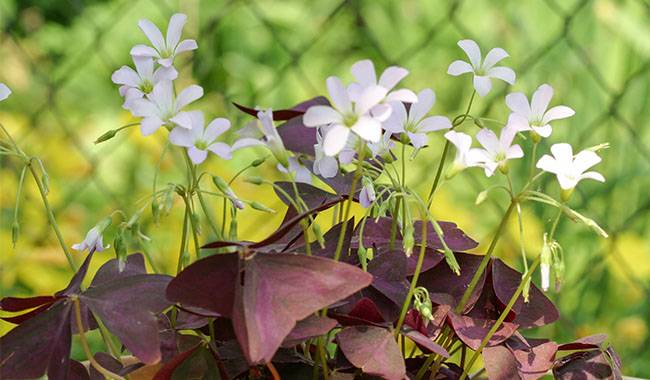
Wood sorrels are best known for their foliage, which folds up in bad weather and overnights and is considered by some to resemble a butterfly and by others to be like an umbrella. But its flowering season should not be underestimated either.
The lush bushes are covered with interesting foliage scattered with petite, delicate tubular flowers that resemble curious stars eager to attract attention. On their soft flower stalks, they respond to the slightest movement in the air, adding a charmingly idyllic look to the plant.
Often known by its botanical name, Wood sorrel is a charming indoor perennial herb that is constantly transforming, actively producing new foliage and flowers.
It is no coincidence that in Europe it is nicknamed Lucky Clover for the beauty of its greenery. Its trifoliate leaves grow on thin stems high above the ground, with a compound bend that folds up like an umbrella in any shade.
They come in green with watercolor spots in the center, chocolate, purple, and violet. New varieties are constantly appearing and are far from dull in appearance. There is a fairly short dormancy period of about 1-1.5 months during the development of the plant, during which watering can be restricted and feeding stopped.
Flowering time. From May to December, sometimes until mid-autumn.
Color range. White, delicate cream, or almost subtle pink flowers.
Flowering characteristics. Wood sorrels’ star-shaped flowers have bright lettuce perianth that opens on stalks that are almost linear, several times longer than the leaves, and they gather in small, confusingly curved bunches that poke out from the mass of foliage. They bloom very quickly, but new flowers appear constantly.
Conditions and care of indoor Wood sorrels
It is not difficult to foresee comfortable conditions for Wood sorrels. This sun-dependent, tiny, delicate little wonder does not like shade, prefers diffused light or a sunny spot (but not midday), and prefers to be placed on a windowsill. In summer, it will also happily move outside into the fresh air.
Wood sorrels grow well at all room temperatures and are warmer but still look best when not in the heat. A cool overwintering environment of 59-68 °F (15-20°C) will help the plant not only maintain its decorative qualities but also produce more flowers the following year. However, even without these measures, Wood sorrels will recover quickly in the spring.
The low maintenance requirements are due to the popularity of all Wood sorrels. This plant regenerates quickly and can be used in combinations with a variety of hyssop as well as other plants. Spray Wood sorrels only in very hot conditions to increase humidity.
- Watering
Water well, allowing only the top of the substrate to dry during the peak growth period and keeping the soil lightly moist in winter. - Feeding
Every 2-3 weeks, in spring and summer, use compound fertilizer, but reduce the amount by half. - Pruning
Withered flowers and foliage can easily fall off on their own. Wood sorrels are not pruned, but gently peeled. - Repotting
Transplant Wood sorrels only when they sprout. Shallow and wide containers and light-colored, neutral, drained soil are suitable for transplanting. - Propagation
Wood sorrels can be propagated by simply dividing the bush or separating the tubers. It is possible to grow the plant from seed. However, Wood sorrels grow so quickly and in such large families that this method is rarely used.
Why Oxalis Triangularis Plants do not Flower
Conditions and care of indoor Abutilon plants
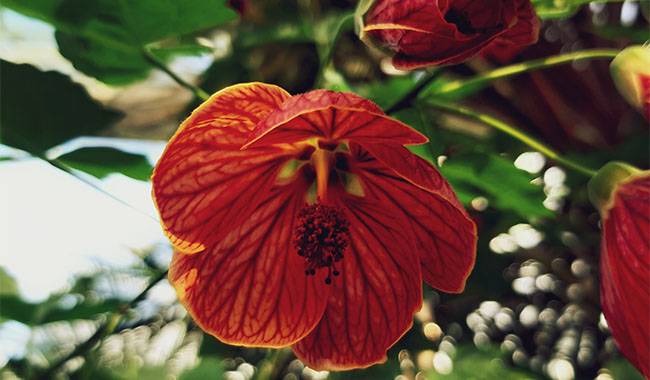
Abutilon spp. is light-loving and shade-intolerant, but direct sunlight can have a detrimental effect on their delicate foliage. Indoor Abutilon tolerates room temperature well in summer and does not like hot weather. They prefer to overwinter in temperatures below 59 °F (15 °C).
Abutilon spp. is easy to care for but requires regular care. They do not require high humidity but do not tolerate extreme dryness.
- Watering
Once the topsoil has dried out, do not allow the substrate to dry out. In winter, reduce watering according to the temperature. - Fertilization
Apply a standard fertilizer every 2 weeks to all flowering plants throughout the blooming period. - Pruning
In spring, when growth starts or before the resting period, shorten the shoots by half their height or maintain the desired shape. - Repotting
Repot Abutilon only when needed, increasing the capacity each time, in a rich and loose soil mix suitable for large butterflies. - Propagation
Abutilon can be propagated by rooting from top cuttings. It can also be grown from seed.
How to Care and Grow Abutilon (Indian Mallow) at Home
Festive beauty of the flowering jungle – Stephanotis
Lovers of white and majestic bouquets and classical beauty should take a closer look at the rather whimsical but so magical aristocrat – Stephanotis. the Madagascar jasmine looks fresh and bright, although it is limited to two colors in the palette.
The cool tones of the bright foliage of this easily molded vine stand out against the porcelain white stars of the fragrant tubular flowers.
Stephanotis floribunda has been reclassified to the genus Marsdenia floribunda (Stephanotis floribunda is now considered synonymous with Marsdenia floribunda), but it is still known and sold under its old name.
One of the most spectacular indoor evergreen vines, known not only for its blooms. The exemplary flawless, leathery, oval leaves have a brilliant sheen and are attractive with their deep, rich forest green color. Long, flexible shoots require mandatory support in room form.
Flowering time. Stephanotis usually blooms in May and, with proper care, finishes flowering only in September. In a greenhouse, they can bloom for about 10 months.
Color range. White only, with cream or ivory shades in some cultivars.
Flowering characteristics. Stephanotis flowers are so fragrant and elegant that it is no coincidence that they are so well-loved in bridal bouquets. They are tubular, with a star-shaped corolla that “stretches out” in panicles of 5-7 flowers, they look dazzling against the foliage background and attract with their “fragrant” scent. stephanotis flowers bloom so much that they even look like a veritable wedding decoration.
Requirements and care of indoor Stephanotis
Scented Stephanotis are not randomly considered to be the right plant for everyone. They are very demanding. Stephanotis plants are not sunning tolerant but need as much light as possible, with additional light in winter.
They like ventilation but fear it, and high temperatures have a detrimental effect on the beauty of the foliage. In the summer, they prefer temperatures of 68-77 °F (20-25°C). In the winter, they need to stay in the shade at 50-59 °F (10-15°C).
Caring for Stephanotis is not easy either. They are moisture-loving and extremely sensitive to fluctuations in soil moisture, requiring constant tying and shaping. Stephanotis should not be touched, moved, or even turned during flowering.
- Watering
Plants are afraid of moist substrates, but allow them to dry evenly without drying out the soil, keeping it very lightly watered and using warm, soft water. - Fertilization
Fertilizer should be applied every 2 weeks with special fertilizer for flowering plants. - Pruning
Guide Stephanotis along the supports to shape them. Cut off only damaged, dry, long, deformed shoots. - Repotting
Transplant Stephanotis by transplanting intact root balls only in February and March, when the plants have nowhere to develop. Stephanotis plants prefer ceramic containers and loose soil with neutral pH. - Propagation
Stephanotis is propagated mainly by cuttings. It is one of the most difficult indoor plants to propagate.




